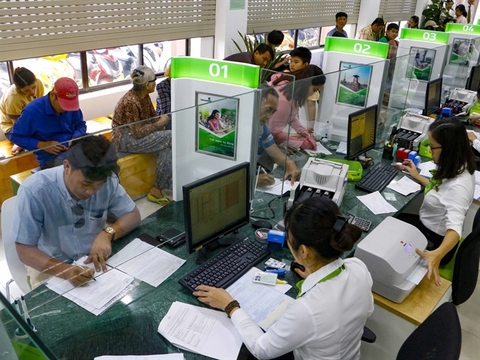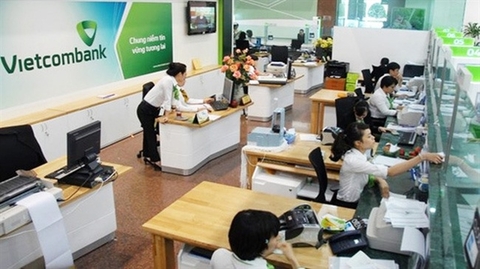Shares to experience choppy trading next week
Shares to experience choppy trading next week
The Vietnamese stock market was entering an accumulation phase and may experience ups and downs with low or moderate liquidity, analysts said. 
The VN-Index on the Ho Chi Minh Stock Exchange (HOSE) lost 0.21 per cent to end Friday at 966.18 points.
The benchmark index totalled an increase of 0.27 per cent last week.
An average of 234 million shares worth almost VND4.5 trillion (US$193.2 million) were traded on the southern market.
The market may experience choppy trading sessions next week as many events will take place, such as the maturity of futures contracts or portfolio restructuring activities of ETFs, according to Tran Xuan Bach, senior analyst at the Bao Viet Securities Company (BVSC).
The VN-Index is likely to continue to fluctuate in the area of 955-971 points next week. It still needs to surpass the resistance area of 970-971 points in order to complete the small bottom pattern and enter the recovery p with higher confidence.
On the Ha Noi Stock Exchange (HNX), the HNX-Index was up 0.22 per cent to end Friday at 102.94 points.
The northern market index climbed up 0.45 per cent last week.
According to analysts at Viet Dragon Securities Co (VDSC), during the last trading session of last week, the VN-Index turned down at short-term resistance while HNX-Index kept going up slightly. Trading volumes increased on both exchanges.
“Both the VN-Index and HNX-Index are quite near their strong supports and bottoming may be in progress. Traders should consider buying on correction,” VDSC said.
“The gaining momentum is facing difficulties at short term resistance level. Large caps were still under selling pressure while mid-caps and pennies drew. Investors should focus on portfolio’s risk management in the last weeks of the year,” VDSC said.
Last week, the market enjoyed a recovery after four consecutive declining weeks thanks to the strong support of banking stocks, said Ngo Quoc Hung, professional senior market researcher, Market Strategy Division, MBS Securities, told tinnhanhchungkhoan.vn.
Vietcombank (VCB) and Bank for Investment and Development of Viet Nam (BID) were the strongest gainers in the banking group last week, with VCB climbing by more than 4 per cent and BID soaring 6 per cent.
After the previous sharp falls, the market was now in an accumulation period and this trend might continue next week, Hung said.
Liquidity last week dropped to a nine-week bottom, averaging more than VND3 trillion per session on the HOSE. Two exchange-traded funds (ETFs) would restructure their portfolios next week, which would also make investors cautious.
Therefore, the market would continue to fluctuate in the accumulation area and waiting for the support information from liquidity as well as the movements of foreign investors, Hung said.
From the beginning of December, foreign investors had net sold VND940 billion on the HSX. This trend was somewhat similar to the situation in the second half of 2016, thus it was likely that foreign investors would be net buyers again next year, Hung said.
Next week, stock exposure should be maintained at 30-35 per cent of the portfolio. Investors with high stock exposure should lower exposure at market rallies, said senior analyst Bach.
Investors that had yet to buy stocks at 946-951 points or had high cash proportion could open new buying positions at the support zone of 954-955 points. They should consider raising stock exposure if the index successfully penetrates through resistance zone 969-970 points, Bach said.
US bank JP Morgan on Friday released a forecast for the Vietnamese stock market which said that the VN-Index might reach 1,105 points in 2020.
According to Le Duc Khanh, chief economist and chief strategy officer at PetroVietnam Securities JSC (PSI), JPMorgan’s forecast is completely rational.
“The benchmark VN-Index would definitely reach out to 1,200 points thanks to the positive macroeconomic prospects, a sharp increase in FDI value, a leap in foreign reserves and the advancement of market size with rising number of listed stocks in recent years,” Khanh said.



























